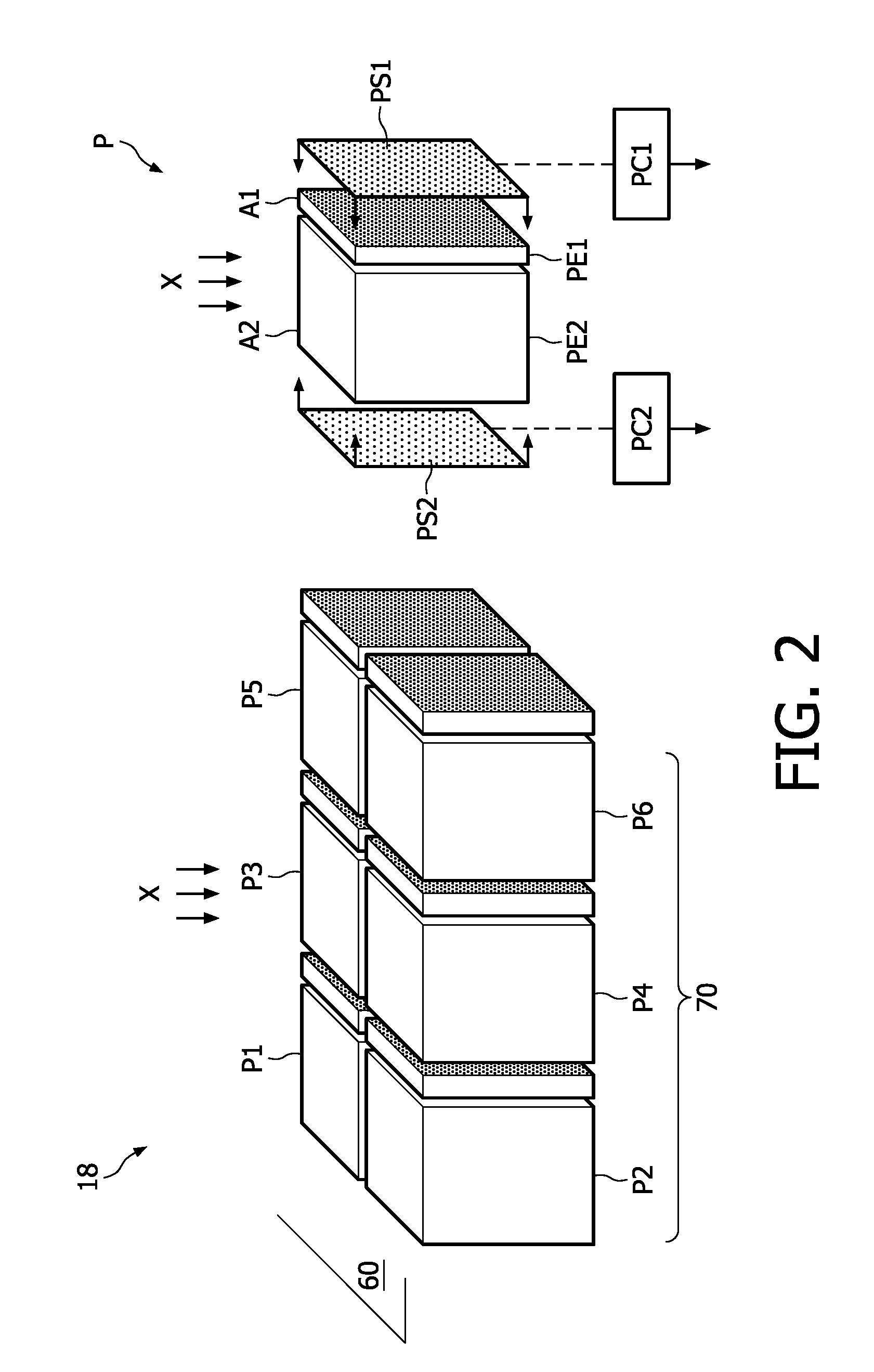Indirect radiation detector
a detector and radiation field technology, applied in the field of indirect radiation detectors, can solve the problems of low x-ray flux density that can be measured without getting large, attenuation of x-ray beam intensity, photon-counting detectors, etc., and achieve the effect of reducing, alleviating or eliminating high x-ray flux density
- Summary
- Abstract
- Description
- Claims
- Application Information
AI Technical Summary
Benefits of technology
Problems solved by technology
Method used
Image
Examples
Embodiment Construction
[0039]FIG. 1 is a schematic representation of a computed tomography (CT) imaging system, in which a computed tomography scanner 10 houses or supports a radiation source 12, which in one embodiment is an X-ray source, projecting a radiation beam into an examination area 14 defined by the scanner 10. After passing through the examination area 14, the radiation beam is detected by a two-dimensional radiation detector 16 arranged to detect the radiation beam after passing through the examination area 14. The radiation detector 16 includes a plurality of detection modules or detection elements 18. Typically, the X-ray tube produces a diverging X-ray beam having a cone beam, wedge beam, or other beam geometry that expands as it passes through the examination area 14 to substantially fill the area of the radiation detector 16.
[0040]An imaging subject is placed on a couch 22 or other support that moves the imaging subject into the examination area 14. The couch 22 is linearly movable along ...
PUM
 Login to View More
Login to View More Abstract
Description
Claims
Application Information
 Login to View More
Login to View More - R&D
- Intellectual Property
- Life Sciences
- Materials
- Tech Scout
- Unparalleled Data Quality
- Higher Quality Content
- 60% Fewer Hallucinations
Browse by: Latest US Patents, China's latest patents, Technical Efficacy Thesaurus, Application Domain, Technology Topic, Popular Technical Reports.
© 2025 PatSnap. All rights reserved.Legal|Privacy policy|Modern Slavery Act Transparency Statement|Sitemap|About US| Contact US: help@patsnap.com



